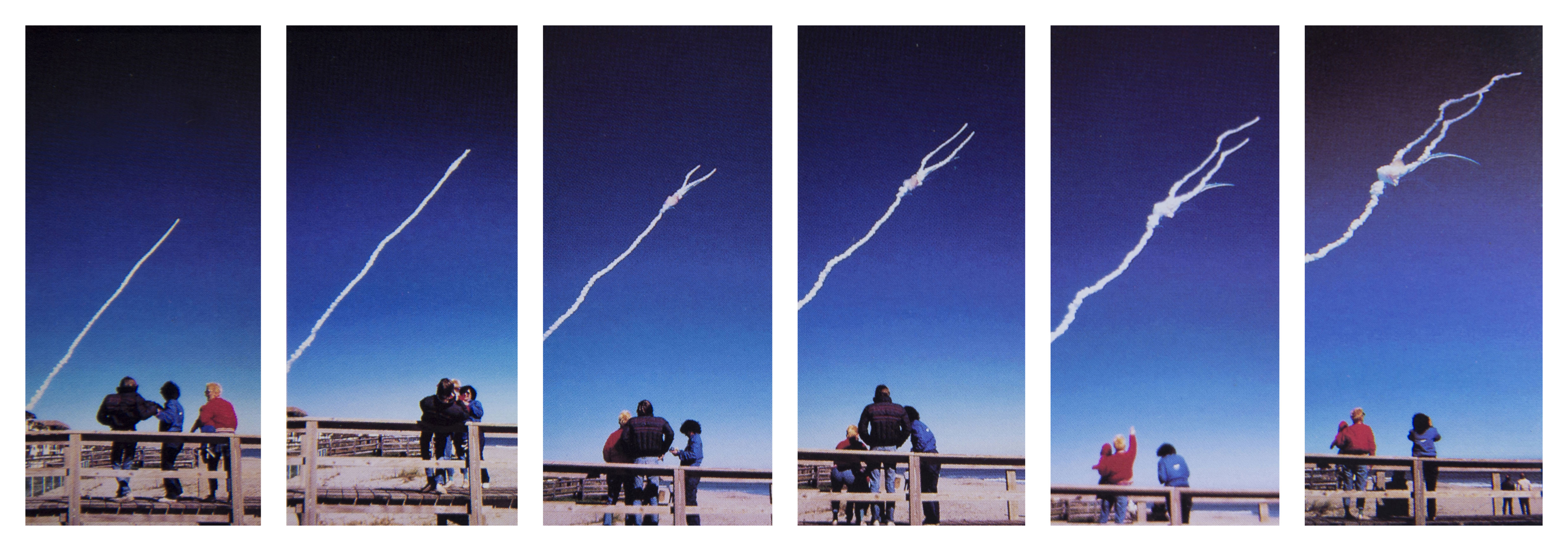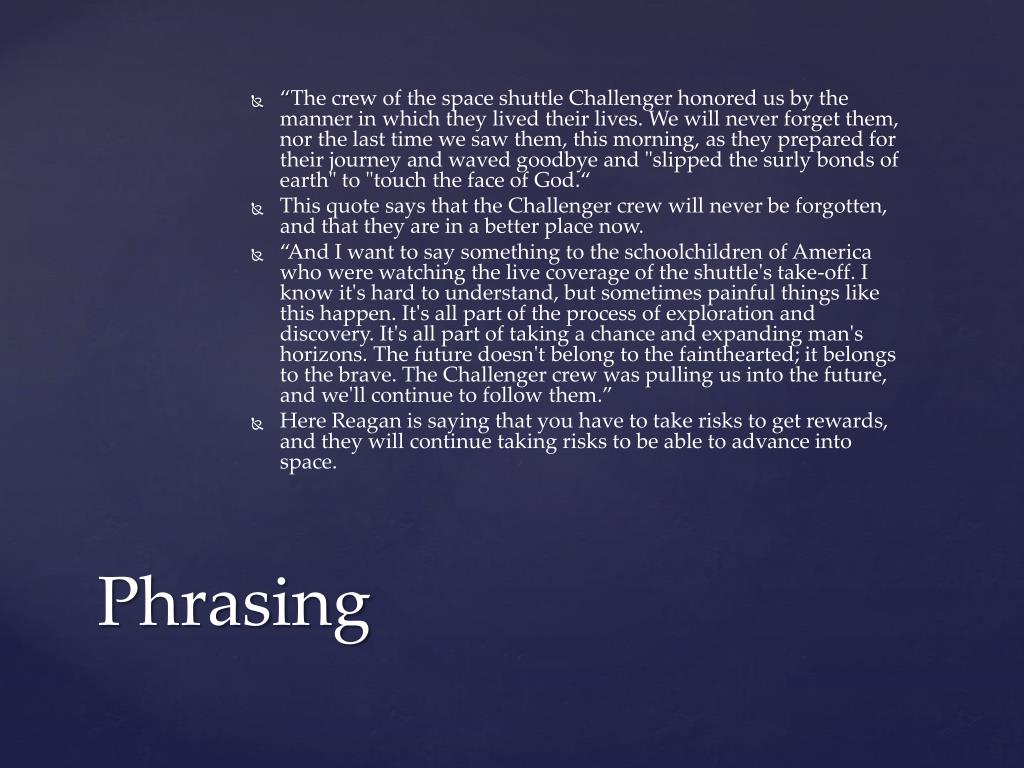
Under severe aerodynamic loads, the space shuttle Challenger broke apart over the Atlantic Ocean one second later, or one minute and 13 seconds after launch. This vaporized material impinged on the strut connecting the solid rocket booster to the shuttle's huge orange external tank, causing both pieces of hardware to break down.Ībout 72 seconds into Challenger's flight, there was a massive, almost explosive, burning of the hydrogen that was streaming from the failed tank bottom, combined with liquid oxygen leaking from a part of the fuel tank known as the intertank. 28, 1986.Īnalysis later showed that a seal, called an O-ring, on the shuttle's right solid rocket booster had failed at liftoff, allowing pressurized hot gas to escape from inside the booster.

After several technical and weather-related delays, Challenger launched at 11:38 a.m.
#Challenger space shuttle tragedy tv#
Many schoolchildren were watching the TV broadcast of the flight to cheer her on.Ĭhallenger's STS-51L mission was the first shuttle liftoff scheduled for Launch Pad 39B at NASA's Kennedy Space Center in Cape Canaveral, Fla. As a civilian and teacher, McAuliffe brought extra public interest to the Challenger mission. McAuliffe, who was 37, taught social studies at Concord High School in New Hampshire. He was 41.Ĭhrista McAuliffe was selected on July 19, 1985, as NASA's first educator astronaut under the agency's Teacher in Space Project. Jarvis had been selected by NASA as a payload specialist candidate in 1984. Payload specialist Greg Jarvis was making his first spaceflight on Challenger's STS-51L mission. McNair, who was the second African-American to fly in space, was 35. From that flight, McNair logged a total of 191 hours in space. Ron McNair previously flew as a mission specialist on Challenger's STS-41B mission, which launched Feb. Onizuka had been selected as an astronaut candidate in 1978 and went on to log 74 hours in space. Mission specialist Ellison Onizuka made his first spaceflight on the shuttle Discovery's STS-51C mission, which launched Jan. Resnik, who had been selected as an astronaut candidate in 1978, was the second American woman in space. Judy Resnik first flew as a mission specialist on the STS-41D mission – the maiden flight of the space shuttle Discovery. Smith's voice saying "Uh-oh" was the last thing heard on the crew's voice recorder, just before NASA's Mission Control in Houston lost telemetry data from the shuttle. Front row (L to R): Pilot Mike Smith, Commander, Dick Scobee and Mission Specialist, Ron McNair.

Onizuka, Teacher in Space Participant Sharon Christa McAuliffe, Payload Specialist, Greg Jarvis and Mission Specialist, Judy Resnik. Back row (L to R): Mission Specialist, Ellison S.

An official portrait shows the STS-51L crewmembers.


 0 kommentar(er)
0 kommentar(er)
